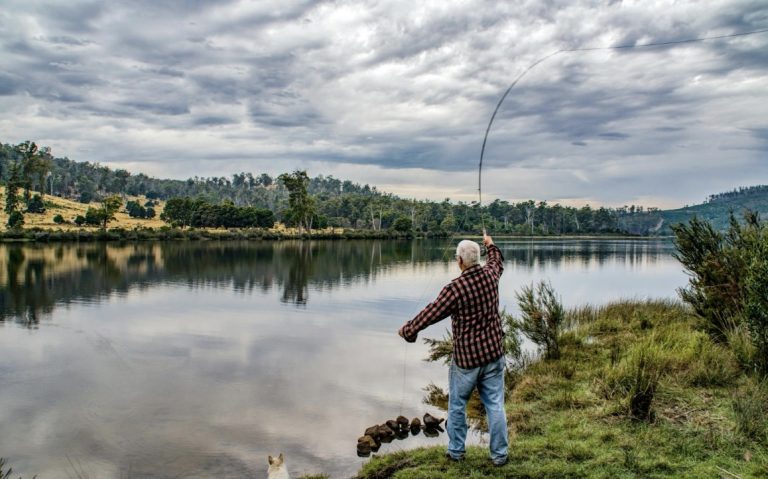Spending a day by the water, rod in hand, surrounded by nature, offers a peaceful escape that many anglers look forward to. Whether you’re casting off a dock, wading through a quiet stream, or cruising in a boat, being well-prepared can make all the difference between a frustrating outing and a successful adventure. Packing the right gear, dressing for the conditions, and planning for unpredictable elements can greatly improve your time on the water. Preparation doesn’t just mean double-checking your tackle box. It’s about considering every part of your trip, from the clothes you wear to how you store your catch. Here’s how to get ready the right way before your next cast.
Dress for Long Hours on the Water
Fishing often means spending hours in direct sunlight, dealing with wind, and sometimes facing rain or sudden temperature changes. One of the most overlooked areas is clothing—especially your shirt. The right shirt should be breathable, quick-drying, and built for movement. Long sleeves are a smart choice, even in warm weather, because they offer added protection from the sun and bugs. When choosing gear, one helpful investment can be men’s fishing shirts, which are specifically designed to manage heat, resist stains, and shield your skin. Picking a shirt that balances function and comfort can make your day more enjoyable and help you stay focused on your cast rather than the climate.
Plan Your Tackle Based on Your Destination
Not every body of water calls for the same setup. Whether you’re going after bass in freshwater or chasing redfish in the flats, your tackle should match the environment and the species. That means taking time before your trip to look into what’s biting and what rigs have been effective in the area recently. Bring a variety of bait and lures, but avoid overpacking. Focus on a mix of proven favorites and a few alternatives that could work under different conditions. Keep your gear organized in labeled boxes so you’re not fumbling when the bite starts heating up. Understanding your target species and the terrain will help you select the right line strength, hook size, and lure presentation.
Know the Weather—and Prepare Beyond the Forecast
Checking the forecast is smart, but you should always be ready for conditions to shift. Cloudy skies might turn sunny and hot, or a clear morning could give way to strong winds and choppy water by afternoon. A lightweight rain jacket and sun hat can make a big difference if the weather turns. Beyond what you wear, consider how weather changes can affect fish behavior. Storm fronts, temperature drops, and barometric shifts often impact feeding patterns. Keeping a small journal of past trips can help you recognize these patterns and react quicker the next time clouds roll in. A good angler adapts, and preparation gives you more options.
Fuel Up: Food, Water, and Comfort Items

Hours in the sun or wind can sneak up on you, draining your energy fast. Keeping hydrated and packing filling snacks keeps your focus sharp. Think simple, non-messy foods like jerky, trail mix, or sandwiches. Hydration is non-negotiable, especially in summer months or when fishing in saltwater areas. Bring more water than you think you’ll need. For longer trips, a small cooler can keep your food fresh and give you a place to store drinks or your catch. Don’t forget small things that boost comfort—a folding chair, sunscreen, bug spray, or even a small towel can help you settle in and stay out longer without discomfort taking over.
Double-Check Your Licenses and Local Regulations
Each fishing spot comes with its own set of rules, from the type of bait allowed to which species are in season. Regulations can vary widely between states, or even between different lakes or rivers within the same state. Always look up the most current guidelines for your destination, and make sure you’re carrying the proper license. Some areas also have restrictions on boat speed, catch-and-release zones, or gear limitations. Following the rules isn’t just about avoiding fines—it keeps ecosystems healthy and fishing sustainable. If you’re traveling, keep digital copies of your license saved to your phone just in case.
Think Ahead About Storing and Transporting Your Catch
Bringing home a fresh catch is part of the reward, but without the right storage plan, your prize could spoil before you make it back. A cooler with plenty of ice is a good start, but try to store fish in a way that avoids direct contact with melting ice to keep the flavor intact. Insulated bags can work for shorter trips or when you’re walking to and from your spot. If you’re fishing all day, clean your catch as soon as you can to avoid spoilage. A sharp fillet knife, some disposable gloves, and a small cutting board can make cleaning fast and clean. Transporting everything in sealable containers keeps odors down and makes cleanup easier once you’re home.
A great fishing trip isn’t just about landing a big one—it’s about feeling ready, comfortable, and in control. By thinking ahead and focusing on both comfort and readiness, you’ll set yourself up for better results and better memories each time you head out.


0 Comments